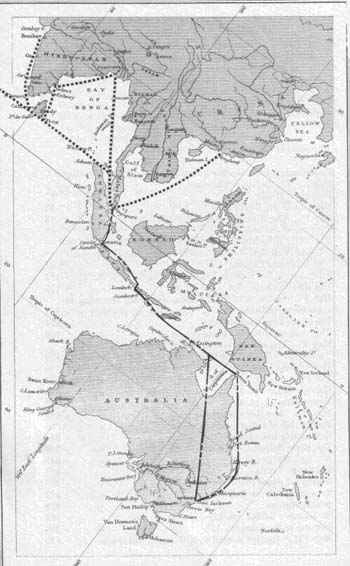Race, Railways and Domiciled Europeans
Main Article Content
Abstract
At times there are dissonances between what he remembers about social relationships and evidence from the vast number of photographs he brought with him from India. The photographs have become an invaluable window into the time and have provided me with a great deal of biographical detail, place names and people that Leslie would otherwise have not remembered. They are in themselves not the ‘truth’ but together with the information from interviews with Leslie it is possible to pastiche a wider snapshot of the time. Memory, trauma and the time that has elapsed have worked on Leslie’s recollections. His voice may be fossilised in a moment but what that moment reveals is of value. I have attempted to place his voice: what shaped it and how it reflects the discursive constructions of the time.
As well as being a narrative about surviving the partition this is also a story of migration, and the complexities of identities constructed around the flow of migrants between and within India, Britain and Australia.
Article Details
Issue
Section
References
Alton-Price, J. (n.d.), Railways Colonies in India, viewed 10th April 2007, www.pricewebhome.co.uk/index.htm
Anthony F (1969) Britain's Betrayal In India; the story of the Anglo India community, Allied Publishers, Bombay.
Arnold, D. (1980) "Industrial Violence in Colonial India", Comparative Studies in Society and History, vol. 22 (22) April, pp. 234-255. https://doi.org/10.1017/S0010417500009324
Bear, L.G. (1994) "Miscegenations of Modernity: constructing European respectability and race in the Indian railway colony, 1857-1931", Women's History Review, vol. 3 (4): 531-548. https://doi.org/10.1080/09612029400200069
Bear, L. (2007) Lines of the Nation: Indian Railway Workers, Bureaucracy, and the Intimate Historical Self, Columbia University Press, New York. https://doi.org/10.7312/bear14002
Blunt, A. (2003) Geographies of Diaspora and mixed descent: Anglo Indians in India and Britain, International Journal of Population Geography, vol. 9 (4) July, pp. 281-294. https://doi.org/10.1002/ijpg.287
Buettner, E. (2004) Empire Families: Britons in Late Imperial India Oxford University Press, Oxford.
Buettner, E. (2000) Problematic Spaces, Problematic Races: defining Europeans in late colonial India, Women's History Review, vol.9 (2): 277-298. https://doi.org/10.1080/09612020000200242
Butalia, U. (1998) The Other Side of Silence, Penguin Books, India.
Caplan, L. (2001) Children of Colonialism: Anglo-Indians in a Postcolonial World, Berg, Oxford.
Caplan, L. (1995) "Creole world, purist rhetoric: Anglo-Indian cultural debates in colonial and contemporary Madras", The Journal of The Royal Anthropological Institute, University of London, vol. 1 (4):743-762. https://doi.org/10.2307/3034959
Carton D. (2000) "Beyond "Cotton Mary": Anglo Indian categories and reclaiming the diverse past", International Journal of Anglo-Indian Studies, vol. 5 (1): 1-12.
Cressey, P.F. (1935) "The Anglo Indians: A disorganized marginal group", Social Forces, vol 14 (2) December pp. 363-268. https://doi.org/10.2307/2571259
Foucault, M. (1967) "Of Other Spaces: Heterotopias, 'Des Espace Autres'" Architecture movementContinuitAin October, 1984: www.foucault.info/documents/heteroTopia/
Friedlander, P. (2002) Religion Race, Language and the Anglo Indians: Eurasians in the census of British India, La Trobe University, viewed on 12 November 2007, www.chef.lib.latrobe.edu.au/dcd/Anglo-Indian
Government of India (1921) Census of India,1, Part 1.
Hedin, E.L. (1934) "The Anglo Indian Community", The American Journal Of Sociology, vol. 40 (2) September, pp. 165 – 179. https://doi.org/10.1086/216682
Lalvani, S. (1996) Photography, Vision, and the Production of Modern Bodies, SUNY, New York.
Marshall P J. (1997) "British Society in India under the East India Company", Modern Asian Studies, Vol 3 (1). https://doi.org/10.1017/S0026749X00016942
McGready-Buffardy P. (2006) Hearts Divided by the Raj, Authorhouse, USA.
McMenamin, D. (2001) "Identifying domiciled Europeans in Colonial India: Poor Whites or Privileged Community?", New Zealand Journal of Asian Studies, vol.3 (1):106-127.
McMenamin, D. (2005) "The curious exclusion of Anglo Indians from mass slaughter during the partition of India", Journal of Anglo Indian Studies, no.16, available online: http://home.alphalink.com.au/~agilbert/jed_16.html
Mitzutani, S. (2002) "Rethinking inclusion and exclusion: the question of mixed-race presence in late colonial India", University of Sussex Journal of Contemporary History, Issue 5, December, pp,1-16.
Stoler, A.L. (1989) "Rethinking colonial categories: European communities and the boundaries of rule", Comparative Studies in Society and History, vol. 13 (1), January, pp.134-160. https://doi.org/10.1017/S0010417500015693
Younger, C. (1984) Anglo Indians from 1919-1983: images of a community in transition, PhD thesis, University of Sydney, Sydney.
